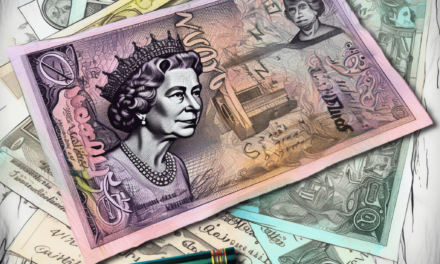Here’s what you need to know before taking a tax-free lump sum from your Self-Invested Personal Pension (SIPP).
- Can I Take a Tax-Free Lump Sum From a SIPP?
- How Much of My SIPP Can I Take Tax-Free?
- Can I Take 25% of My SIPP Tax-Free Every Year?
- How Do I Avoid Paying Tax on My SIPP?
- Is It Better to Take a Lump Sum or Monthly SIPP?
- How Do I Avoid Taxes on Lump Sum Pension Payout?
- What Are the Advantages of Taking 25% Tax-Free From My SIPP?
- What Is the Tax Advantage of a SIPP?
- FAQs
Can I Take a Tax-Free Lump Sum From a SIPP?
Yes, you can! When you reach the age of 55 (or 57 from 2028 onwards), you’re allowed to take a tax-free lump sum from your SIPP.
This feature is known as the Pension Commencement Lump Sum (PCLS).
How Much of My SIPP Can I Take Tax-Free?
You can take up to 25% of your SIPP’s value tax-free. The remaining 75% can be used to provide a taxable income, which can be drawn as needed through a flexible drawdown or used to purchase an annuity.
You can take your full SIPP tax free lump sum straight away in one go, or spread it out over a number of payments over multiple years. You have full flexibility and control.
This guide aims to give you the knowledge to make your own decisions regarding your SIPP tax-free cash. However, if you find the information overwhelming or just want peace of mind you’re doing the right thing for your retirement, we recommend speaking to a SIPP adviser like ourselves. Book a free, initial consultation with an adviser to see how we could help.
Can I Take 25% of My SIPP Tax-Free Every Year?
No, that’s not how it works. The 25% tax-free lump sum is a one-time opportunity. Once you’ve taken it, you can’t take another tax-free lump sum each year.
You can however spread your 25% tax-free cash across multiple years if you want to.
What If I Don’t Need the Money Right Away?
If you don’t need the money immediately, you don’t have to take your lump sum as soon as you’re eligible. You can also just take a small portion of it and take more at a later date.
You can leave the money in your SIPP and let it continue to grow tax-efficiently. You can then access your SIPP tax free lump sum later when you need it.
How Do I Avoid Paying Tax on My SIPP?
Here are some tips to avoid paying tax on your SIPP:
- Take advantage of the 25% tax-free lump sum.
- For the rest of your pension, split your income over multiple years and try to avoid taking big lump sums.
- Try to stay within your personal allowance for income tax.
- Choose other investments that offer tax-efficient returns, such as ISAs or Venture Capital Trusts (VCTs) – although VCTs are recommended for sophisticated investors only.
Remember, tax rules change, so you may wish to consult with a financial advisor for up-to-date advice!
Is It Better to Take a Lump Sum or Monthly SIPP?
It depends on your financial goals and circumstances.
Taking a lump sum may be better if:
- You have a large expense to cover, such as a home renovation or debt repayment.
- You want to invest the money elsewhere, like in property or other high-growth investments (or help out a family member with a first house deposit).
- You need the funds to support a business venture or passion project.
Monthly payments might be more suitable if:
- You want to minimise your tax liability by spreading out your withdrawals.
- You need a regular income to cover living expenses, such as mortgage payments, utility bills, and groceries.
- You’d like a more predictable and stable income stream to support your lifestyle.
Combining Lump Sum and Monthly Payments
Another option is to combine the two strategies. You could take a portion of your SIPP as a tax-free lump sum and use the remaining amount to generate a regular income.
This approach can provide you with the flexibility of a lump sum for immediate needs and a consistent income stream for the long term.
How Do I Avoid Taxes on Lump Sum Pension Payout?
To minimize taxes on a lump sum pension payout, follow these tips:
- Use your tax-free personal allowance wisely. Your annual tax-free personal allowance can be used to offset taxable income, including pension income. It refreshes every year – but remember it will be used up by other forms of income such as your state pension if you’re receiving it.
- Spread your pension withdrawals over multiple tax years. By spreading your pension income over several years, you can potentially avoid pushing yourself into a higher tax bracket.
- Consult with a financial advisor for personalized advice. Tax planning can be complex, and a financial advisor can help you navigate the nuances of your specific situation.
Here’s a table showing the income bands in the UK in case you need a recap:
| Tax Band | Taxable Income | Tax Rate |
|---|---|---|
| Personal Allowance | Up to £12,570 | 0% |
| Basic Rate | £12,571 to £50,270 | 20% |
| Higher Rate | £50,271 to £125,140 | 40% |
| Additional Rate | Over £125,140 | 45% |
What Are the Advantages of Taking 25% Tax-Free From My SIPP?
Some benefits of taking the 25% tax-free lump sum include:
- Financial flexibility: Use the money for investments, big-ticket expenses, or to pay down debt.
- Potential for growth: Invest the lump sum to potentially grow your wealth further, either through your SIPP or other investment vehicles (remember the MPAA of £10,000).
The Role of a Financial Advisor
When considering whether to take your 25% tax-free lump sum, it’s a good idea to consult with a financial advisor.
They can help you evaluate your financial situation, assess the potential impact on your future tax liability, and determine the best course of action for your specific circumstances.
What Is the Tax Advantage of a SIPP?
The primary tax advantage of a SIPP is the tax relief on contributions. You receive tax relief at your marginal rate, which can be 20%, 40%, or 45%, depending on your income. This means that for every £80 you put in, the government adds another £20 for basic rate taxpayers, and more for higher-rate payers.
Other Tax Advantages of SIPPs
In addition to tax relief on contributions, SIPPs offer several other tax advantages:
- Tax-efficient growth: Investments within a SIPP grow free of capital gains tax and income tax.
- Inheritance tax planning: SIPPs can be an effective tool for inheritance tax planning, as they can often be passed on to beneficiaries without incurring inheritance tax (primarly if you die before the age of 75).
- Flexible access: SIPPs offer flexible access to your pension funds, allowing you to control the timing and amount of your withdrawals, which can help you manage your tax liability.
FAQs
Can I Put Money Into My Pension to Avoid Tax?
Yes, contributing to a pension can help reduce your tax bill. Pension contributions receive tax relief, and you can contribute up to 100% of your annual earnings or £60,000, whichever is lower.
By making pension contributions, you can effectively reduce your taxable income and potentially lower your overall tax liability.
You also don’t pay income or CGT on your investments inside a pension.
Do I Have to Declare SIPP Tax-Free Lump Sum on My Tax Return?
No, you don’t need to declare the tax-free lump sum on your tax return.
The 25% tax-free lump sum from your SIPP is not considered taxable income.
However, any income you receive from the remaining 75% of your pension pot, whether through drawdown or an annuity, is taxable and should be declared on your tax return.




